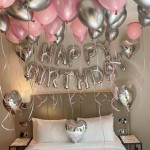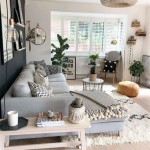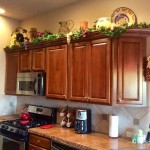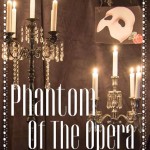Moroccan Home Decor Ideas: A Guide to Infusing Exotic Elegance
Moroccan home decor is renowned for its opulent textures, vibrant colors, and intricate designs. It draws inspiration from a confluence of Berber, Arabic, and European influences, creating a distinctive aesthetic that is both timeless and captivating. Incorporating Moroccan elements into a home involves more than just selecting a few accessories; it requires understanding the underlying principles and applying them thoughtfully to achieve a harmonious and authentic ambiance.
This article delves into several key aspects of Moroccan home decor, providing practical ideas and insights into how to successfully integrate this exotic style into various spaces. It covers essential design elements, color palettes, furniture choices, and decorative accents, offering a comprehensive guide for anyone seeking to infuse their home with the allure of Morocco.
Key Elements of Moroccan Interior Design
Moroccan interior design is characterized by several core elements that contribute to its unique and recognizable style. These elements include the use of rich colors, geometric patterns, luxurious textures, and natural materials. Understanding these elements is crucial for recreating an authentic Moroccan atmosphere.
Color plays a significant role in setting the mood. Deep reds, vibrant oranges, and rich yellows evoke the warmth and energy of the desert landscape. Blues and greens, reminiscent of the Mediterranean Sea and lush oases, add a sense of tranquility and coolness. Gold and silver accents are frequently used to enhance the overall sense of opulence. The strategic use of contrasting colors can further accentuate architectural details and create visual interest.
Geometric patterns, particularly those found in zellige tilework and latticework, are integral to Moroccan design. These intricate patterns are often incorporated into floors, walls, and furniture. The repetition and complexity of these designs create a sense of depth and visual richness. The use of geometric patterns extends beyond tiles to textiles, such as rugs and cushions, further enhancing the overall aesthetic.
Texture is equally important in Moroccan decor. Plush rugs, soft cushions, and intricately woven fabrics contribute to a tactile and visually appealing environment. Silk, velvet, and cotton are commonly used to create a luxurious and inviting atmosphere. The layering of different textures adds depth and complexity to the design, making it visually engaging.
Natural materials, such as wood, stone, and metal, are prevalent in Moroccan interiors. Wood is often used for furniture, doors, and ceilings, while stone is used for flooring and walls. Metalwork, particularly in brass and copper, is used for lighting fixtures, trays, and other decorative objects. The use of natural materials contributes to the overall warmth and authenticity of the space.
Incorporating Moroccan Furniture and Lighting
The selection of furniture and lighting is crucial for creating an authentic Moroccan atmosphere. Furniture should be both functional and aesthetically pleasing, while lighting should be carefully chosen to create a warm and inviting ambiance. The right furniture and lighting choices can transform a space and evoke the spirit of Morocco.
Traditional Moroccan furniture is often handcrafted and features intricate carvings and embellishments. Low seating arrangements are common, with comfortable cushions and poufs replacing traditional chairs. Coffee tables are often low and ornate, providing a central gathering point. The use of wood, metal, and leather is prevalent, adding to the overall sense of craftsmanship and authenticity.
One distinctive piece of Moroccan furniture is the Moroccan daybed, or "divan." These are often upholstered with richly colored fabrics and adorned with intricate patterns. They serve as both seating and lounging areas, adding a touch of luxury and comfort to the space. Daybeds can be customized with cushions and pillows to create a personalized and inviting oasis.
Lighting plays a crucial role in creating the desired ambiance. Moroccan lanterns, made of pierced metal or colored glass, cast intricate shadows that dance across the walls, creating a warm and inviting atmosphere. These lanterns come in a variety of shapes and sizes, from small table lamps to large hanging fixtures. The use of candles and other ambient lighting sources further enhances the overall mood.
The warm glow of Moroccan lighting creates a sense of intimacy and mystery. The soft, diffused light enhances the textures and colors of the room, creating a visually rich and inviting space. The placement of lighting fixtures should be carefully considered to highlight architectural details and create a focal point.
In addition to lanterns, Moroccan-style sconces and chandeliers can also be used to add elegance and visual interest. These fixtures often feature intricate designs and are made from materials such as brass, copper, and crystal. The combination of different lighting sources creates a layered effect that adds depth and complexity to the design.
Achieving an Authentic Moroccan Color Palette
The color palette is a fundamental aspect of Moroccan home decor. It should be carefully considered to create a harmonious and visually appealing space. An authentic Moroccan color palette typically includes warm, earthy tones, vibrant jewel tones, and metallic accents. The strategic use of these colors can transform a room and evoke the spirit of Morocco.
Warm, earthy tones such as terracotta, sand, and ochre form the foundation of the Moroccan color palette. These colors evoke the warmth and beauty of the desert landscape and create a sense of grounding and stability. They can be used for walls, floors, and large furniture pieces to create a welcoming and inviting atmosphere.
Vibrant jewel tones such as sapphire blue, emerald green, ruby red, and amethyst purple add a touch of opulence and luxury. These colors are often used for accent pieces, such as cushions, rugs, and decorative objects. They provide a striking contrast to the earthy tones and add a sense of vibrancy and energy to the space.
Metallic accents, particularly gold and silver, are used to enhance the overall sense of luxury and elegance. These metals are often incorporated into lighting fixtures, mirrors, and decorative objects. They add a touch of glamour and sophistication to the design and reflect light, creating a warm and inviting atmosphere.
The use of white as a backdrop can help to balance the richness of the other colors and create a sense of lightness and airiness. White walls and ceilings can provide a neutral canvas for showcasing colorful furniture and accessories. White can also be used to highlight architectural details and create a sense of spaciousness.
The careful combination of these colors is essential for creating an authentic Moroccan atmosphere. The colors should be balanced and harmonious, with a mix of warm and cool tones to create visual interest. The use of color can also be used to define different areas of the room and create a sense of flow and continuity.
Consider using paint techniques such as limewash or tadelakt to add texture and depth to the walls. Limewash creates a soft, matte finish that enhances the natural texture of the walls, while tadelakt creates a smooth, waterproof surface that is often used in bathrooms and kitchens. These techniques add a touch of authenticity and craftsmanship to the design.
In conclusion, successful Moroccan home decor involves a thoughtful consideration of colors, textures, patterns, and materials. By embracing these elements, one can create a space that is both visually stunning and deeply evocative of the exotic beauty and rich cultural heritage of Morocco.
:max_bytes(150000):strip_icc()/4-tips-for-buying-the-perfect-moroccan-rug_1000x-8e7612ad47c544cdaab48d9cc6d2dd3d.jpeg?strip=all)
11 Moroccan Inspired Decor Ideas

Moroccan Home Decor Ideas Mediterranean Living Room Los Angeles By Badia Design Inc Houzz Ie

10 Best Moroccan Decor Design Ideas In 2025 Inspired

Moroccan Interior Design Ideas For Your Home Designcafe

Moroccan Style Interior Design

Moroccan Decor Ideas For Home

Moroccan Home Decor Ideas You Ll Want To Get For Your City Apartment


Bring A Touch Of Morocco To Your Home With These Interior Designs

Moroccan Decor Ideas For Home
Related Posts







